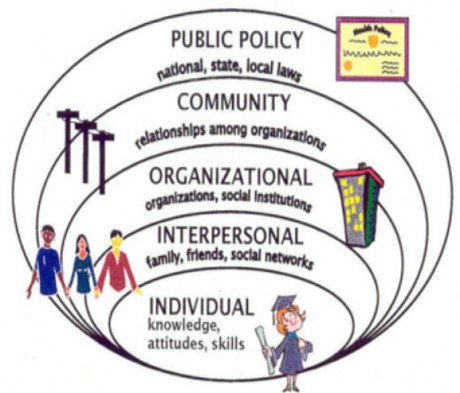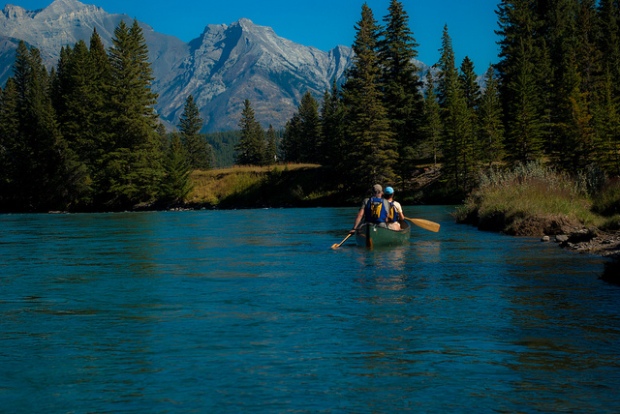by Jacquelyn Oncescu (University of Manitoba)
The early establishment of the recreation profession in Canada was to meet the needs of those who struggled most in Canadian society. For example, the National Council of Women of Canada were considered the early pioneers of our profession, specifically advocating for the development of supervised playgrounds (known as the Playground Movement) to help the poor, immigrant, and homeless children and youth get off unsafe streets. Advocates believed that, “supervised play could improve the mental, moral, and physical well-being of children”[1]. Through the National Council of Women, supervised playground programs developed across Canada. They partnered with local government councils, schools, and religious organizations to utilize funding, human resources, land and buildings to advance the provisions of the playgrounds and local playground associations across the country. Over time, Local Councils were able to hire staff, develop curriculum, and utilize school grounds to offer recreation programming that focused on games, arts and crafts[2]. In short, our profession’s beginnings were working in partnership with allied professions to help those in need and advocate for social reform.
Today, in the context of Manitoba, where I’m currently working and doing research, we have one of the highest rates of childhood poverty in the country—which is hugely problematic. Children living in poverty are less likely to succeed in school, are at higher risk of health issues, developmental delays and behavioural disorders[3]. Poverty also makes it more difficult for families to access essential resources needed to support healthy childhood development—including leisure and recreation activities. We know that low-income households are less likely to participate in recreation and sport activities than individuals from higher-income homes [4]. Constraints to recreation participation can include: expensive program fees, equipment needs, program locations, limited transportation, uninviting program structures and schedules, limited awareness about programs, limited knowledge on subsidy policies, and exposure to racism and stereotyping[5]. As I reflect on these constraints, I’m left to question how we (leisure practice and research) are doing in meeting the leisure needs of those less fortunate.
Inclusive Strategies
The field of recreation has been working really hard at being more inclusive. In fact, there are a number of programs, policies and procedures that have been developed specifically for low-income cohorts. These initiatives have largely focused on addressing financial constraints. Popular approaches are fee assistance programs, which subsidize participation in leisure programming. The premise is that the costs associated with structured and unstructured recreation activities and programs can be problematic for low-income families, so the profession has put in place funding programs to alleviate the financial burden. In terms of programs and resources, the field of recreation has provided a number of free and low-cost recreation programs to meet the needs of low-income children and youth. Often these programs take place in community recreation centres or after school programs. The private sector has also developed grant programs to support the costs associated with child and youth sport participation.
Researchers, however, have noted that a number of the strategies the recreation profession has put in place to break down the barriers to recreation participation for low-income families are ineffective. Take the fee assistance programs, for example. To receive such financial assistance, participants need to be aware that the funding is available to apply for, which they often are not, and in some cases, subsidized fee programs aren’t promoted by the recreation centre because the centre doesn’t want to financially commit to the costs of subsidized programs. Second, getting the fee assistance information is often a convoluted process that takes a lot of time, which deters parents from engaging in the process. Third, the process often involves the notion of “proving you’re poor”, as tax assessment forms and unemployment papers are required to assess the families’ level of “need” (poverty)—which only further stigmatizes the families.
In the context of programs, researchers have argued that, in the case of community sport clubs, an emphasis on middle-class preferences and less on the needs of desires of underprivileged children and youth have contributed to high dropout rates among low-income populations[6]. In addition, the location and distribution of these programs are often out of reach for children and youth living in low-income contexts. Often low income neighbourhoods lack access to recreation facilities and services, and have limited access to transportation to get to programs outside their neighbourhoods.
Though public and private sector funding has been invested in recreation and sport policy to reduce exclusion, low-income children and youth are less likely to benefit from these sport and recreation programs. Government cutbacks have forced public and non-profit recreation agencies to reduce supports for low-income populations[7]. In addition, a number of corporate grants for recreation participation are specific to sport, which limits funding for other activities that are related to arts, drama, culture and other non-sport activities. Finally, some research has indicated that public recreation spaces are not a welcoming environment. For example, some women living in low-income contexts reported being discriminated against by recreation centre employees because of their low socioeconomic statuses[8]. The processes for fee assistance programs also makes individuals feel judged and vulnerable, leading to a lack of participation from low-income families [9].
Standing on Islands: The Recreation Profession & Low-Income Families
Despite the extensive efforts of the profession, a divide between our profession and those individuals living in low-income contexts has emerged. It is as if we have two islands. On one island is the recreation profession with all of its recreation and leisure programs and their related services it makes available to the public. On this island, the profession is meeting the needs of those individuals and families that have the skills, knowledge, confidence, and awareness and appreciation of leisure that is needed to participate in such activities. On the other island, we have a group of individuals living in stressful social and economic conditions that have limited their ability to acquire the leisure skills, knowledge, confidence, respect, time, and resources needed to participate in recreation and leisure activities.
The Bridge: Leisure Education
We have the opportunity to change this dire situation and bridge the two islands, and I think, leisure education can part of the process. As defined in previous posts, leisure education is a process that creates intentionally designed programs that focus on helping individuals create sustainable recreation and leisure opportunities, but it also builds a broad repertoire of skills to address the challenges they encounter in their day-to-day lives, and to be engaged in their homes, families, and communities.
Leisure education can help enhance an individuals’ leisure functioning in a number of ways. For example, leisure education outreach programs can help educate individuals on accessing recreation programs and services in the community. These types of programs could include teaching parents how to fill out grant application forms, and where and from whom they can access financial resources and supports in the community. In addition, these programs could help families develop the skills needed to negotiate barriers and plan for leisure and recreation both in their homes and their communities. Leisure education can help parents and children identify their strengths and assets, which can help build confidence in themselves and the activities they engage in.
To better meet the needs of those living in poverty, the profession could reach out in a different way. To give an example of how leisure education can work in the community, I want to introduce you to Recreation Opportunities for Children Inc. (ROC). ROC is a charitable organization based out of Steinbach, Manitoba and is an outreach-based organization providing recreation services and resources to low-income families. ROC works in partnership with public, private and voluntary agencies to support low-income families with registration fess, equipment and supplies, transportation, and knowledge on community recreation resources to help create a healthy lifestyle. A key component of ROC’s service delivery model is their leisure education program. Knowing that families living in low-income contexts have a wide range of constraints to participating in and/or creating recreation and leisure experiences that go beyond lack of money, ROC developed a comprehensive leisure education program targeted at families living in poverty. The program has been developed with “fun” in mind, with each session being delivered in the form of a game followed by discussion with the family. The program is delivered in a 1-on-1 format and has roughly 8 sessions. Each session has a goal and specific learning outcomes that were developed based on the staff experiences working with the families but also the participants’ feedback. As much as possible, ROC involves the families in developing and refining the program content and topics. To date, ROC’s leisure education program involves the following topic areas:
- Leisure/recreation awareness
- Self-awareness (personal values, attitudes, past experiences)
- Benefits of leisure
- Interests
- Personal skills & strengths
- Home & community leisure resources
- Planning for leisure
- Goal setting for leisure
ROC knew that by only providing families with equipment, registration fees, and money that they were creating a situation in which the families’ leisure experiences were dependent on them. They wanted to know that when they were done working with a family that they were leaving them with a greater appreciation for leisure and recreation, but also the skills, knowledge, and confidence needed to create their own leisure experiences as best they could. ROC has a dedicated staff, board of directors and community partners that are working hard at supporting low-income families differently. Going out into unchartered territory isn’t easy, but doing things differently just might be what is needed to bridge our islands.
[1]Bachrach, Julia Sniderman. “Playground Movement.” Encyclopedia of Chicago.
http://www.encyclopedia.chicagohistory.org/pages/976.html > 6 April 2012.
[2]E.M. McFarland, “Editorial – Recreation Pioneers Honored at Conference,” Recreation Canada 28 (October 1970): 5.
[3] Dominique, F. (May, 2008). Perspectives on Labour and Income: Low-Income Children (No. 75-001). Retrieved from Statistics Canada Industry Division: http://www.statcan.gc.ca/pub/75-001x/2008105/article/10578-eng.htm
[4] Clark, W. (2008). Kid’s sports. Canadian social trends. Component of Statistics Canada catalogue no. 11-008-X.
[5] Frisby, W., Alexander, T., Taylor, J., Tirone, S., Watson, C., Harvey, J., & Laplante, D. (2005). Bridging the Recreation Divide: Listening To Youth and Parents From Low Income Families Across Canada, Ottawa: Developed for The Canadian Parks and Recreation Association (CPRA).
[6] Edwards, M. B., Bocarro, J. N., & Kanters, M. A. (2011). Place disparities in supportive environments for extracurricular physical activity in north carolina middle schools. Youth & Society, 45(2), 265-285.
[7] Tirone, S. (2003). “Evening the playing field”: Recreation in a low-income Canadian community. Leisure/Loisir, 28(1-2), 155-174. doi:10.1080/14927713.2003.9649944
[8] Frisby, W., & Millar, S. (2002). The actualities of doing community development to promote the inclusion of low income populations in local sport and recreation. European Sport Management Quarterly, 2, 209-233.
[9] Trussell, D., & Mair, H. (2010). Seeking judgement free spaces: Poverty, leisure and social inclusion. Journal Of Leisure Research, 42(4), 513-533.






